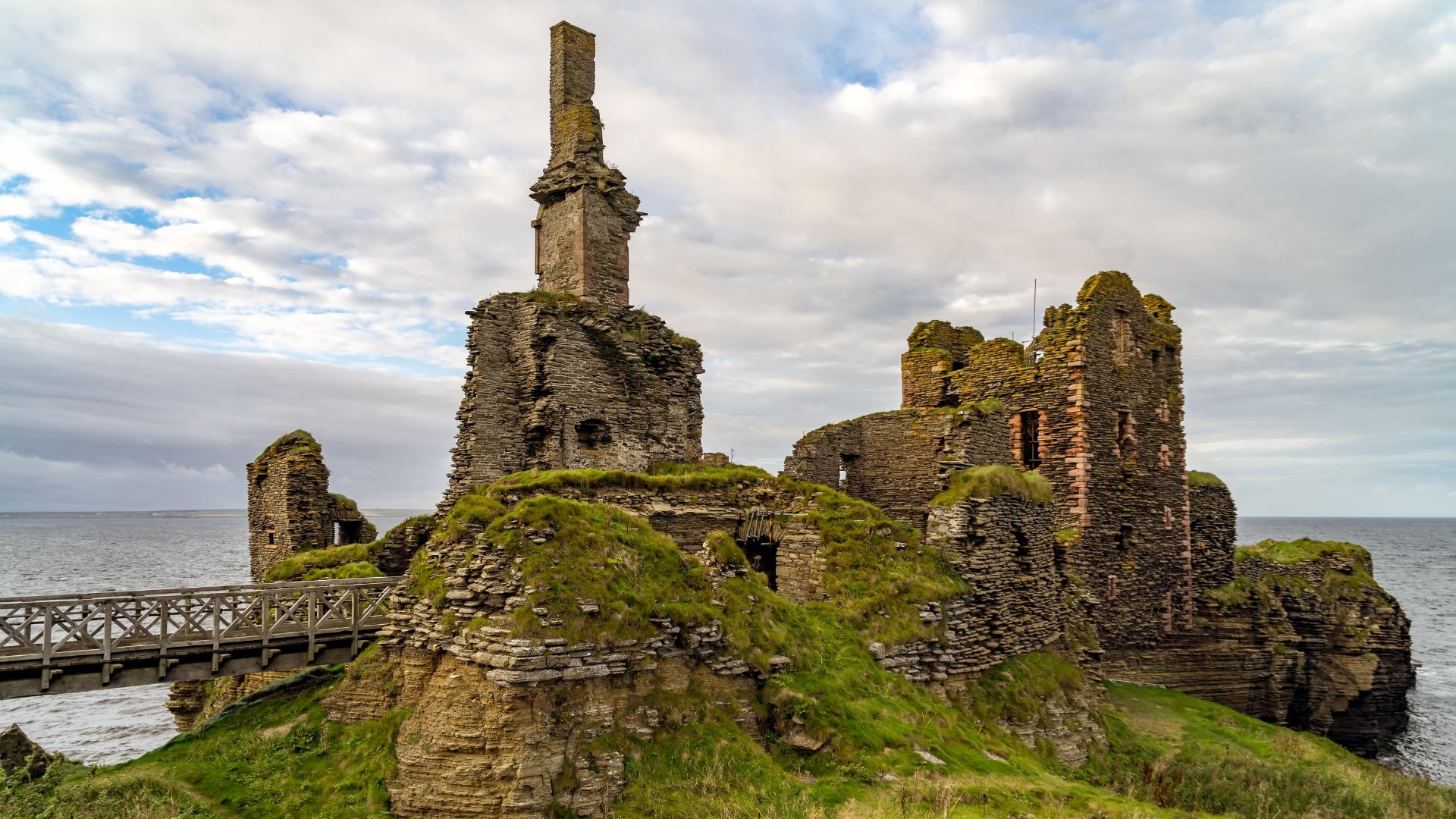Table of Content
I. Introduction
Nestled amidst the rugged landscapes of the Scottish Highlands, Clan Sutherland stands as a bastion of heritage and tradition. With a history steeped in valor, resilience, and noble lineage, Clan Sutherland has left an indelible mark on the annals of Scottish history.
A. A Brief Overview of Clan Sutherland

Clan Sutherland, a Highland Scottish clan and one of the oldest clans in Scotland, traces its origins back to the Norse-Gaelic settlers of the Highlands. Originally hailing from the region of Sutherland in the northernmost part of Scotland, the clan rose to prominence through strategic alliances, military prowess, and territorial acquisitions. The clan's headquarters are at Dunrobin Castle in Sutherland, Scotland.

In 1493, the leadership of the clan passed to Adam Gordon, the husband of the previous chief's daughter, establishing strong ties between Clan Sutherland and Clan Gordon. Renowned for their bravery and resilience, the Sutherlands participated in key battles and conflicts, shaping the course of Scottish history.
B. The Original Name of Clan Sutherland
The Sutherland Clan gets its name from the region of Sutherland in northern Scotland. The name originates from "Sudrland," which means southern land, indicating land situated south of the Norse earldom of Orkney and Caithness. Believed to have Flemish roots, the Sutherlands are descendants of Freskin, who is an ancestor of the Murray clan.
Despite their apparent connection with another clan, the Clan Sutherland has a history of enduring conflicts with various families, such as the Sinclairs of Caithness, the MacKays, and the MacLeods. One of these conflicts reached its peak when the 11th Earl of Sutherland and his wife were poisoned by the Earl of Caithness. Initially settling in West Lothian, Freskin later acquired lands in Moray, integrating with the Moray lineage through strategic marriages.
II. Clan Sutherland History

William de Moravia, the third Earl, fought at Bannockburn in 1314 with Robert the Bruce. Kenneth, the fourth Earl, died at Halidon Hill in 1333, a big blow for the Scots. William, the fifth Earl, strengthened ties with the Scottish crown by marrying Margaret, daughter of Robert the Bruce. However, their bond faced challenges when both were captured at Neville's Cross in 1345. Despite being the heir, John, the Earl's son, lost the throne to Robert Stewart, who became King Robert II in 1371.
The Earls of Sutherland had a tumultuous relationship with neighboring clans such as the Sinclair Clan in Caithness and the MacKay Clan and MacLeod Clan to the west, leading to conflicts over time. A tragic incident occurred when Nicholas Sutherland of Duffus, a branch of the main Sutherland Clan, murdered the chief of clan MacKay at Dingwall Castle during a failed attempt to resolve their disputes. In retaliation, the MacKays set fire to Dornoch Cathedral and executed several Sutherland men in the town square. This feud culminated in the death of the fifth Earl at the hands of the MacKays in 1370.
In 1431, forces from the Murrays and Sutherlands clashed with the MacKays at Drumnacoub, near Tongue. In 1480, John MacDonald, the Earl of Ross, invaded Sutherland but was repelled by a combined force of Sutherland and Murray's men. Additionally, in 1513, William Sutherland, the fourth Laird of Duffus, was among the many Scottish nobles who perished in the Battle of Flodden.
In 1517, the Sutherland and Gordon Clans united through marriage when the 10th Countess of Sutherland married Adam Gordon, son of Gordon of Huntly. Their son, Alexander Gordon, inherited the earldom and leadership of Sutherland. This union sparked conflict with the MacKays, leading to the Battle of Torran Dubh near Sutherland later that year, resulting in a defeat for the MacKays. Subsequent disputes arose when the countess's brother contested the chiefship but was defeated by Adam Gordon at the battle of Alltachuillain, where he lost his life.
The 11th Earl of Sutherland, John Gordon, led his clan against the English at the Battle of Pinkie Cleugh in 1555, marking the final major battle between Scotland and England before the crowns were unified. The centuries-long feud with the MacKays concluded at the battle of Garbharry in Berriedale. In 1586, the Sutherlands and MacKays solidified their newfound alliance by joining forces against the neighboring Clan Gunn at Leckmain.
Sutherland then turned its focus towards the Clan Sinclair, besieging Castle Sinclair Girnigoe in 1588. In retaliation, George Sinclair, the 5th Earl of Caithness, invaded Sutherland lands in 1590, clashing with the clan at Clynetradwell near Brora.

During the 17th century, religious differences emerged between the Sutherland and Gordon clans. The Gordons remained staunchly Catholic while the Sutherlands embraced Protestantism, reflecting the broader religious divide across Scotland during this tumultuous era. The 14th Earl of Sutherland opposed the Royalists at the Battle of Aldearn, a victory for the Royalists. Later, the Sutherlands allied with the Munro and Ross clans against James Graham, the Marquis of Montrose, achieving success at the battle of Carlisle.
During the 1715 Jacobite Rising, the 16th Earl sided with King George I and defended Inverness Castle against the Jacobites. Sutherland's forces also fought on the government's side at the Battle of Glenshiel in 1719, effectively quelling that chapter of the Jacobite rebellion. Following these events, the 16th Earl, John Gordon, officially changed his name to Sutherland and was duly recognized as the chief of the Sutherland clan by Lord Lyon.

In 1745, when Charles Edward Stuart initiated the Jacobite Rising, the Sutherlands once again aligned themselves with the government. Despite this, the Jacobites, under George MacKenzie, the Earl of Cromartie, managed to seize Dunrobin Castle, the Sutherland clan's stronghold in Golspie. The chief narrowly escaped capture by fleeing through a back exit and sailing to Aberdeen. After regrouping, he confronted MacKenzie's forces at Littleferry. However, due to historical conflicts with the Campbell Clan and suspicions held by the British Government towards Highlanders, the Sutherlands were still viewed with distrust as potential Jacobite sympathizers, despite their actions.
In 1766, William Sutherland's death made his daughter Elizabeth the heir to titles. George Sutherland and Sir Robert Gordon disputed her inheritance. The House of Lords settled the matter in Elizabeth's favor in 1771. If not, the Highlands' fate might have been different. Elizabeth married George Leveson Gower, who later became the first Duke of Sutherland in 1833. He cleared Sutherland lands ruthlessly with Patrick Sellar, leaving a dark legacy.
Upon the death of the 5th Duke, the leadership and Earldom once again passed to a woman, his niece Elizabeth, the 24th Countess. Elizabeth passed away in 2019, and Alistair succeeded her as the 25th Earl of Sutherland.
III. Clan Sutherland Crest and Coat of Arms
A. Clan Sutherland Crest
Clan Sutherland
Gaelic Name: Sutherlarach
Crest: A cat-a-mountain sejant rampant, proper
Motto: Sans Peur (Without Fear)
Badge: Cotton Sedge
Lands: Sutherland
Clan Chief: Alistair Charles St.Clair Sutherland, 25th Earl of Sutherland

The Clan Sutherland crest features a striking depiction of a "cat-a-mountain sejant rampant" (Scottish wildcat), symbolizing strength, agility, and ferocity. This emblem represents the clan's martial spirit and readiness for battle, evoking images of courage and determination in the face of adversity. As a formidable predator native to the Scottish Highlands, the wildcat holds deep significance in Clan Sutherland's heraldry, reflecting the clan's connection to its ancestral lands and the rugged terrain of the Highlands.
B. Clan Sutherland Coat of Arms
IV. Clan Sutherland Tartan
Every clan has multiple variations of its tartan, which can be quite bewildering for those unfamiliar with the system.

The Sutherland Clan tartan is a traditional Scottish tartan associated with the Clan Sutherland. The tartan typically features a pattern of green, blue, and black stripes, with red and white accents. The specific design may vary, as there are different variations of the Sutherland tartan.
One of the well-known versions is the Sutherland modern tartan, which consists of dark green, navy purple, and black stripes. It's essential to note that there are other Sutherland tartan variations, such as the Hunting Tartans, which are designed to blend in with nature and act as camouflage. Some clans do not have these types of tartans because their traditional tartans already consist mostly of green or brown, making them suitable for blending in with the environment.
Explore the timeless traditions of Clan Sutherland through our collection of tartan products on our website. And bring a piece of the clan's history into your present.
V. Prominent Members of Clan Sutherland
A. William Sutherland, 18th Earl of Sutherland (1708–1750)

William Sutherland, the 18th Earl of Sutherland, greatly influenced the governance and progress of the Sutherland region in the 18th century. As a prominent Scottish nobleman, he led the region with a focus on fostering economic growth, social stability, and cultural advancement. His initiatives in education, local industries, and infrastructure left a lasting positive impact on the region's prosperity and well-being. Earl William's legacy as a devoted leader and community advocate is still honored and cherished today.
B. George Granville Sutherland-Leveson-Gower, 3rd Duke of Sutherland (1828–1892)

George Granville Sutherland Leveson-Gower, 3rd Duke of Sutherland, had a significant impact on Scottish society in the 19th century. As a prominent aristocrat and politician, he influenced both local and national affairs. Known for philanthropy and social reform, especially in land management and tenant relations, he aimed to improve living conditions and reduce poverty among tenant farmers in the Highlands.
Although his controversial land practices, like the Highland Clearances, are debated, the 3rd Duke's legacy involves intricate socioeconomic changes that shaped the cultural and economic scenery of the Scottish Highlands.
C. Elizabeth Sutherland, 24th Countess of Sutherland (1921–2019)
Elizabeth Sutherland, the 24th Countess of Sutherland, was renowned for her commitment to preserving Scottish heritage and raising cultural awareness. Descendant of the esteemed Sutherland lineage, she held the title with grace. Her work in heritage conservation and cultural preservation had a significant impact on the region and beyond.
She restored historical landmarks and advocated for environmental conservation and community welfare, earning widespread admiration. Her legacy as a devoted steward of Scottish heritage inspires many who value Scotland's cultural legacy.
D. Sir William Sutherland, 9th Baronet of Duffus (1789–1858)
E. Alistair Charles, 25th Earl of Sutherland
VI. Conclusion
As custodians of a proud legacy, Clan Sutherland continues to thrive, with its members upholding the traditions and values that have defined the clan for generations. With a spirit of kinship and solidarity, Clan Sutherland in Scotland remains a pillar of strength and unity, ensuring that its heritage will endure for generations to come.
Frequently Asked Questions
Who is the head of the Sutherland clan?
The chief of the clan was also the powerful Earl of Sutherland; however, in the early 16th century, this title passed through marriage to a younger son of the chief of Clan Gordon. The current chief is Alistair Sutherland, who holds the title of Earl of Sutherland.
What is the significance of the Clan Sutherland crest?
The Clan Sutherland crest features a wildcat sejant (sitting upright) atop a coronet, symbolizing strength, courage, and nobility.
Are there any notable Clan Sutherland castles or historic sites?
Yes, notable sites include Dunrobin Castle, the ancestral seat of the Earls of Sutherland, and the ruins of Skelbo Castle.
What are some notable Clan Sutherland mottos or slogans?
The clan motto is "Sans peur," which means "without fear" in French, reflecting the clan's courage and resilience.











